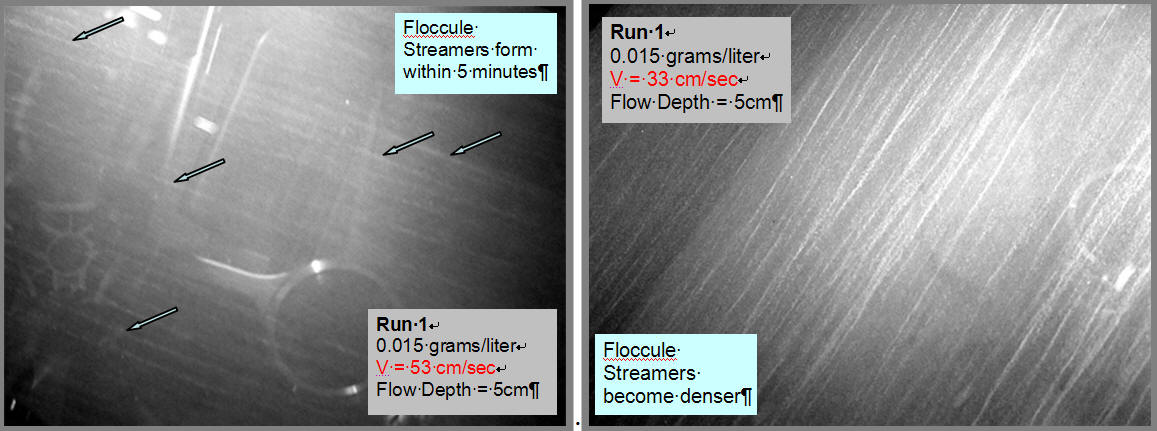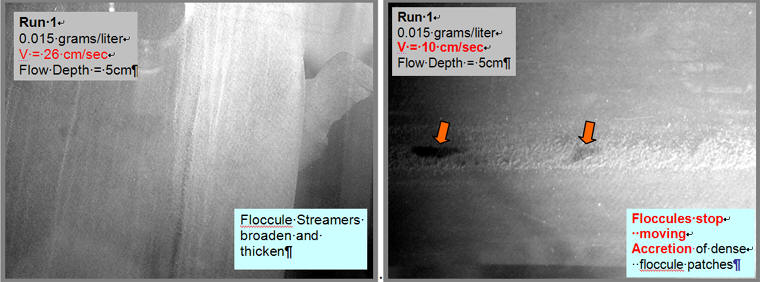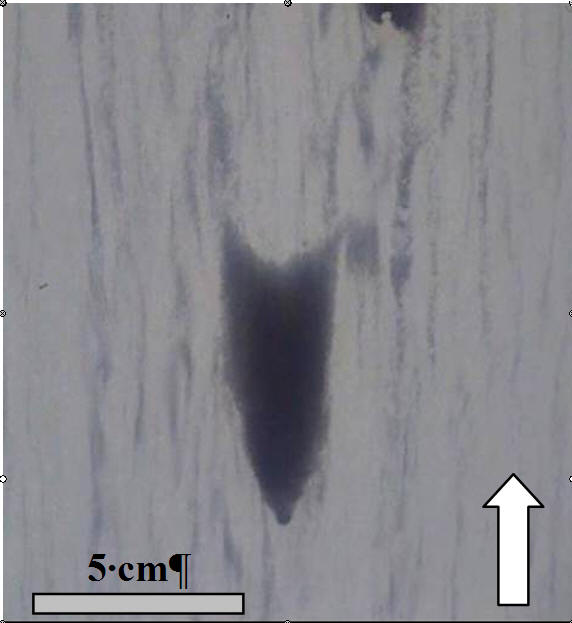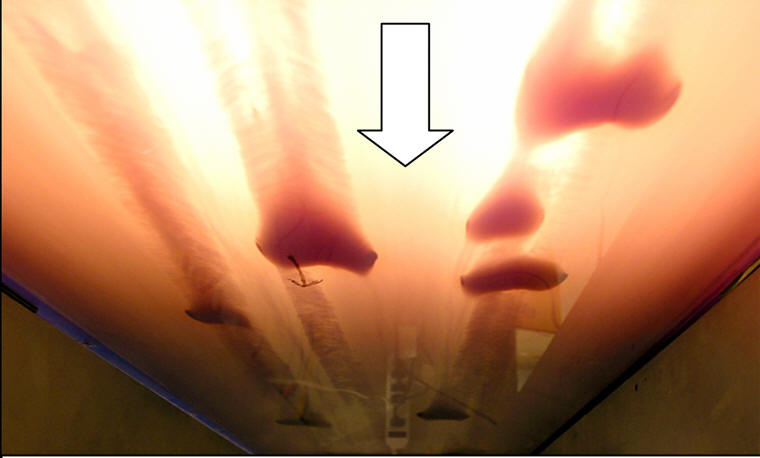
 |
|
|
|
|
|
|
|
|
Experimental Mudstone Sedimentology - Ongoing Work with the IU Mudflumes |
|
| The IU Mudflume is a large racetrack flume facility dedicated to the experimental study of mudstone depositional processes. Currently we are running experiments designed to quantify the threshold of deposition for various clays under a range of salinity and suspended sediment concentration. Using a paddle belt to move the water minimizes the damage to clay flocs during recirculation, a problem that has hampered the ability of other experimental setups to produce realistic data. This work is NSF funded, and currently we are developing protocols for mud experimentation, as well as making continuous flume upgradeds, in in an ongoing dialogue with CoPI John Southard from MIT. We just published first results in SCIENCE and put a video on YouTube. | |
 |
 |
| In order to obtain a uniform flow cross section, a flow lid is installed (basically we have flow through a rectangular pipe). Lowering or raising the lid allows manipulation of the velocity profile within the channel and control of bottom shear stress. | Developing bed features and flow velocity, turbidity, T, pH, etc. are measured and recorded at the downstream end of the observation stretch. |
 |
|
| From the very start of every experiment, even at high velocities and low sediment concentrations, sweeping streamers of clay floccules form at the flume bottom. | As velocity is gradually lowered, more and more clay is transferred to the bottom in the form of bedload floccules. |
 |
|
| Over time the floccule streamers broaden and thicken. | Until at some point dense patches of floccules begin to form that slowly migrate down the flume channel. Once these stop motion, congregation will over time lead to formation of a bottom-covering clay beds. |

In detail, the floccule patches are streamlined. They narrow to a point in upstream direction, and broaden in downstream direction. They move significantly slower than the individual floccules in adjacent streamers. They are basically migrating bedforms that can be considered the "small ripples" of the clay world. Instead of sand grains, they consist of clay floccules that are in the fine to medium sand size range (0.1 - 0.7 mm). |
|
 |
|
| Once the critical velocity of sedimentation has been reached, clays continuously leave suspension as floccules and promote the formation of bedload ripples (above, flume channel bottom with migrating clay ripples, width 25 cm, arrow indicates flow direction) that migrate across the flume bottom. This process continues until the water is essentially clear. | |
| Although we are only
at the beginning of years of future experimentation, our initial
experiments suggest the following:
(1) At any given flow velocity/bottom shear stress, and regardless of clay type and sediment concentration, clays form floccules and a certain proportion of these will move along in bedload. (2) These bedload floccules congregate into slowly migrating ripples that will coalesce into contiguous beds once enough sediment has been transferred to bedload. (3) The critical threshold of deposition (velocity when all suspended sediment will drop out over time) coincides with the onset of significant ripple formation. (4) Mud can be deposited from fast moving suspensions that are capable of transporting sand and silt. There appears to be no need for still water to allow muds to accumulate from suspension. (5) There are apparently clear rules (physical parameters) that govern deposition of mud. These physical parameters (flow velocity, sediment concentration, salinity) differ between clay types, but the general process is the same in all cases. Schieber, J., et al, 2020. Engraved on the rocks –aeolian abrasion of Martian mudstone exposures and relation to modern wind patterns in Gale Crater, Mars. The Depositional Record, v. 6, https://doi.org/10.1002/dep2.110. Link Yawar, Z., and Schieber, J. (2017), On the origin of silt laminae in laminated shales. Sedimentary Geology, v. 360, p. 22-34. Link Schieber, J., 2016, Experimental Testing of the transport-durability of Shale Lithics and its implications for interpreting the rock record. Sedimentary Geology, v. 331, p. 162-169. Link Experimental Deposition of Carbonate Mud From Moving Suspensions: Importance of Flocculation and Implications For Modern and Ancient Carbonate Mud Deposition. Journal of Sedimentary Research, v. 83, p. 1025-1031.Link Schieber, J., Southard, J.B., and Schimmelmann, A., 2010, Lenticular Shale Fabrics Resulting from Intermittent Erosion of Muddy Sediments – Comparing Observations from Flume Experiments to the Rock Record. Journal of Sedimentary Research, v. 80, p. 119-128.Link Schieber, J., and Yawar, Z., 2009, A New Twist on Mud Deposition - Mud Ripples in Experiment and Rock Record. The Sedimentary Record, v. 7/2, p. 4-8.Link Schieber, J., and Southard, J.B., 2009, Bedload Transport of Mud by Floccule Ripples – Direct Observation of Ripple Migration Processes and their Implications. Geology, v. 37, p. 483-486.Link Schieber, J., Southard, J.B., and Thaisen, K., 2007, Accretion of Mudstone Beds from Migrating Floccule Ripples, Science, v. 318, p. 1760-1763. Link A review of the significance of this work has been published in the Perspectives section of SCIENCE: Macquaker, J.H.S. and Bohacs, K.M., 2007, On the Accumulation of Mud, Science, v. 318, p. 1734-1735. We have also produced an educational video
that shows the experiments and resulting deposits and posted it on
YouTube. The links are here: IU Flume Movie, V.1 IU Flume Movie, V.2 |
|
|
|
|
| Back to SHALE RESEARCH LAB Main Page | |
| Back to IU Department of Geological Sciences | |
|
© Jürgen Schieber, IU Bloomington Department of
Geosciences Last updated: February 08, 2022. |
|